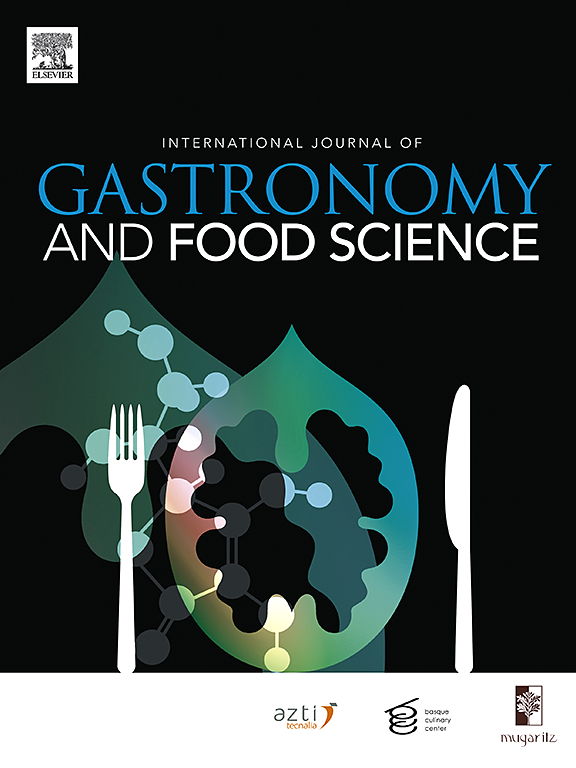Forests, woods and saké: Analysis of constructing premium with terroir
IF 3.2
2区 农林科学
Q2 FOOD SCIENCE & TECHNOLOGY
International Journal of Gastronomy and Food Science
Pub Date : 2024-12-01
DOI:10.1016/j.ijgfs.2024.101065
引用次数: 0
Abstract
This study focused mainly on the micro-organisms that affect quality in the sake production process and the wooden barrels (Ki-Oke) in which they live, and analysed their potential to achieve economic differentiation, like terroir in wine. The French term terroir is a concept in the world of alcoholic beverages, enabling products to differentiate themselves from mass-products and rise above price competition. High-end French wines leverage terroir for economic differentiation, encouraging competition avoidance. In this paper, historical development of Saké and forests or wood are elucidated. Conventionally, Saké production involves unique elements to local or contexts including ingredients of water, micro-organism of Koji or modus of productions such as Kimoto. Furthermore, forests as surrounding environment and woods in forms of barrels serve both functional and symbolic roles. Frequently, narratives and storytelling of the Saké encompass soil, location, and climate, which parallels wine. The Japanese saké industry, mirroring high-end wine culture, relies on storytelling, distinguishing itself through rice, water, and microorganisms. Water's role, especially the transition from soft to hard water in Nada, holds historical significance. Wooden barrels (Ki-Oke) are vital, emphasizing "microorganism terroir" and region-specific differentiation, aligning saké with wine in understanding terroir. Historically, saké relied on vertical differentiation based on rice polishing ratios, akin to New World wine. Balancing scientific control with tradition presents challenges, risking homogenization of specific names. The future trajectory diverges between luxury, emphasizing microbial terroir, and potential commoditization, questioning strategic utilization of high-quality sectors and the balance between tradition and innovation. The dichotomy lies in emphasizing microbial terroir through wooden barrels or potential homogenization of specific names, raising questions about strategic utilization, balance between tradition and innovation, and unique challenges faced by the saké industry Ongoing research explores contemporary scientific techniques, fermenting wood cellulose into alcohol, potentially introducing new premium sakés celebrating the essence of forests and creating new dimension of terrior. . Such linkages to culture in ancient brewing practices provide authority and legitimacy for the to the sake.
求助全文
约1分钟内获得全文
求助全文
来源期刊

International Journal of Gastronomy and Food Science
Social Sciences-Cultural Studies
CiteScore
5.30
自引率
10.50%
发文量
170
审稿时长
45 days
期刊介绍:
International Journal of Gastronomy and Food Science is a peer-reviewed journal that explicitly focuses on the interface of food science and gastronomy. Articles focusing only on food science will not be considered. This journal equally encourages both scientists and chefs to publish original scientific papers, review articles and original culinary works. We seek articles with clear evidence of this interaction. From a scientific perspective, this publication aims to become the home for research from the whole community of food science and gastronomy.
IJGFS explores all aspects related to the growing field of the interaction of gastronomy and food science, in areas such as food chemistry, food technology and culinary techniques, food microbiology, genetics, sensory science, neuroscience, psychology, culinary concepts, culinary trends, and gastronomic experience (all the elements that contribute to the appreciation and enjoyment of the meal. Also relevant is research on science-based educational programs in gastronomy, anthropology, gastronomic history and food sociology. All these areas of knowledge are crucial to gastronomy, as they contribute to a better understanding of this broad term and its practical implications for science and society.
 求助内容:
求助内容: 应助结果提醒方式:
应助结果提醒方式:


